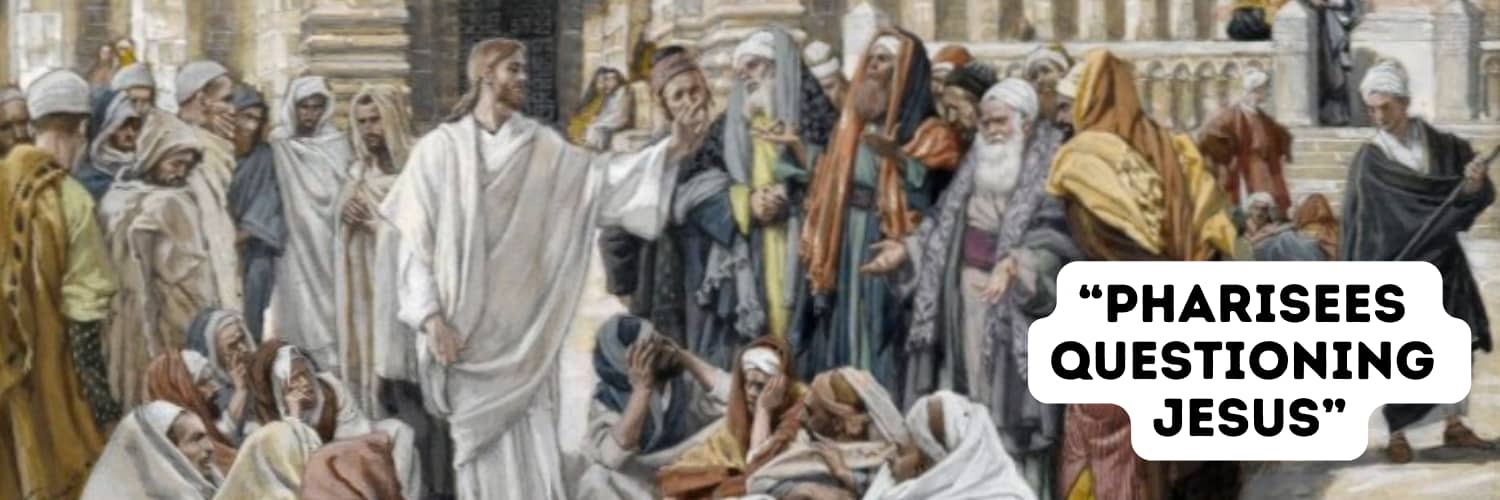Saul of Tarsus Was A Heavy Hitter In Jerusalem Society
In Philippians 3:5, the apostle described himself as, " a member of the people of Israel, of the tribe of Benjamin, a Hebrew born of Hebrews; as to the law, a Pharisee." So what did that really mean?
The Pharisees were one of the most influential religious groups in ancient Israelite society. They were a Jewish sect comprised of educated scribes, priests, and other members of society who studied and followed the Law of Moses. He was a leader, follower, and teacher of Torah; a well-respected man in Jerusalem.
What Role Did The Pharisees Play In The Biblical Times Of Jerusalem?
In Jerusalem, the Pharisees were well-respected among their people and had a significant influence over religious and political life. The Pharisees believed that the Torah (the Law of Moses) was divinely revealed and should be strictly followed.
This meant that they were very strict in their interpretation of the law, and as such were often in conflict with the Sadducees, another religious group. The Pharisees were also known for their willingness to debate their interpretations of scripture with each other. The Pharisees were also highly respected teachers of the Law of Moses, and their instruction was highly sought after by the people of Jerusalem.
They also played an important role in the politics of Jerusalem, often engaging in debates and discussions with the city's leaders. Many Pharisees were elected to positions of authority in the Sanhedrin, a religious court in Jerusalem.
In summary, the Pharisees were a highly influential religious group in ancient Israelite society. During the Second Temple period, the Pharisees were respected teachers of the Law of Moses, and had significant influence over religious and political life in Jerusalem. Despite internal disputes over the interpretation of scripture, the Pharisees were known for their strict adherence to the Torah and their willingness to engage in religious debates.

Some Religious Groups Wanted The Apostles Put To Death
The Sanhedrin were left feeling resentful of those who followed Jesus and claimed He was the Messiah. In an attempt to put a stop to their preaching, the Sanhedrin repeatedly put the apostles to trial and publicly beat them (Acts 5:33).
Though they wished for their deaths, the Sanhedrin knew they could not legally execute someone without permission from the Roman governor, which led to political repercussions. At this point, Gamaliel--the best-known Pharisaic rabbi of his time and grandson of Hillel, another rabbi known for his peaceful interpretation of Mosaic Law--stood up before them all and gave his opinion on the matter (5:34).
He reminded them of similar revolutionary religious movements and their leaders from before, whom he said achieved nothing. Gamaliel suggested Jesus could be no different and so the Sanhedrin agreed upon publicly beating the apostles once more and ordering them not to speak again about their teachings.
The Story Of Stephen Being Brutally Murdered By The Synagogue Of Freedmen
One day, Stephen, one of the apostles, encountered members of the Synagogue of Freedmen: a group made up of Roman citizens descended from Jewish slaves freed by Roman general Pompey one hundred years prior. They were attracted to Stephen's preaching yet still stirred up a mob to accuse him of blasphemy.
The council asked him “Are these things so?” and Stephen proceeded to give an extensive sermon on Jewish history starting with Abraham and ending with Solomon. Though his words were filled with truth, they infuriated the council and they dragged him out to stone him to death.
The council immediately grabbed him and dragged him outside the city. They took off their tunics and cloaks, gave them to a certain Pharisee named Saul to hold, and they stoned Stephen to death (7:59-60).
I think it's very telling that Saul of Tarsus was a willing accomplice to the murder of Stephen; he stood by and did not intervene to save another man's life. Obviously, he agreed that another man should be put to death just for his beliefs. But Saul's story gets even worse.
What Could Cause Saul To Hate Those Who Followed Jesus?
Saul of Tarsus (later known as Paul) was among the synagogue members and was a Cilician whose ancestors were among those who gained citizenship when Pompey released slaves.
He had zeal for his Jewish heritage and studied under high-ranking Pharisee Gamaliel; this fueled his hatred for Christianity.
His entire life was based on his belief in the Law of Moses (the Torah). Those who followed Jesus preached blasphemy in Saul's view. It simply could not be tolerated. Death was an appropriate punishment.
Saul was driven to to pursue Jesus' followers across Judea and Samaria in attempt to arrest them or worse, have them put to death. He even obtained letters from the high priest in Jerusalem authorizing his actions in other towns and villages. He became an unrelenting hunter and punisher of the followers of Jesus.
The Man We Know As St. Paul (Formerly Saul) Was Heading To A Reckoning
As a high-ranking and respected religious leader, Saul eagerly pursued and persecuted Christians with great enthusiasm and passion. He even sought and received authorization from the high priests in Jerusalem to hunt down the followers of Jesus anywhere he pleased.
He was a high-ranking, well-respected religious leader in the highly stratified Jewish world of Jerusalem. The high priests of the temple authorized him to hunt down and persecute the followers of Jesus far and wide. What - or who - could possibly stop him?
The image with this post is from a famous painting now hanging in the Brooklyn Museum. In America, the image is considered as in the public domain and can be utilized by anybody in anyway. I hope it added to this subject.
Citation:
File:Brooklyn Museum - The Pharisees Question Jesus (Les pharisiens questionnent Jésus) - James Tissot.Jpg. In Wikipedia. https://commons.wikimedia.org/wiki/File:Brooklyn_Museum_-_The_Pharisees_Question_Jesus_(Les_pharisiens_questionnent_J%C3%A9sus)_-_James_Tissot.jpg
{{PD-US}}
